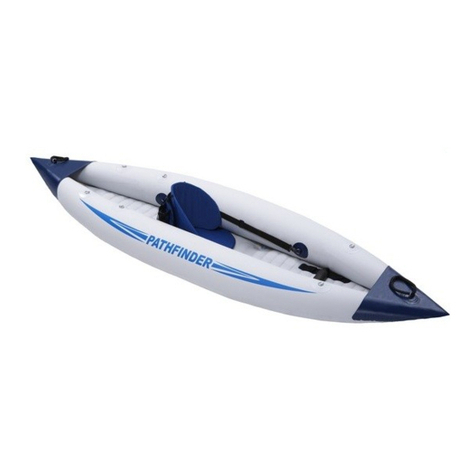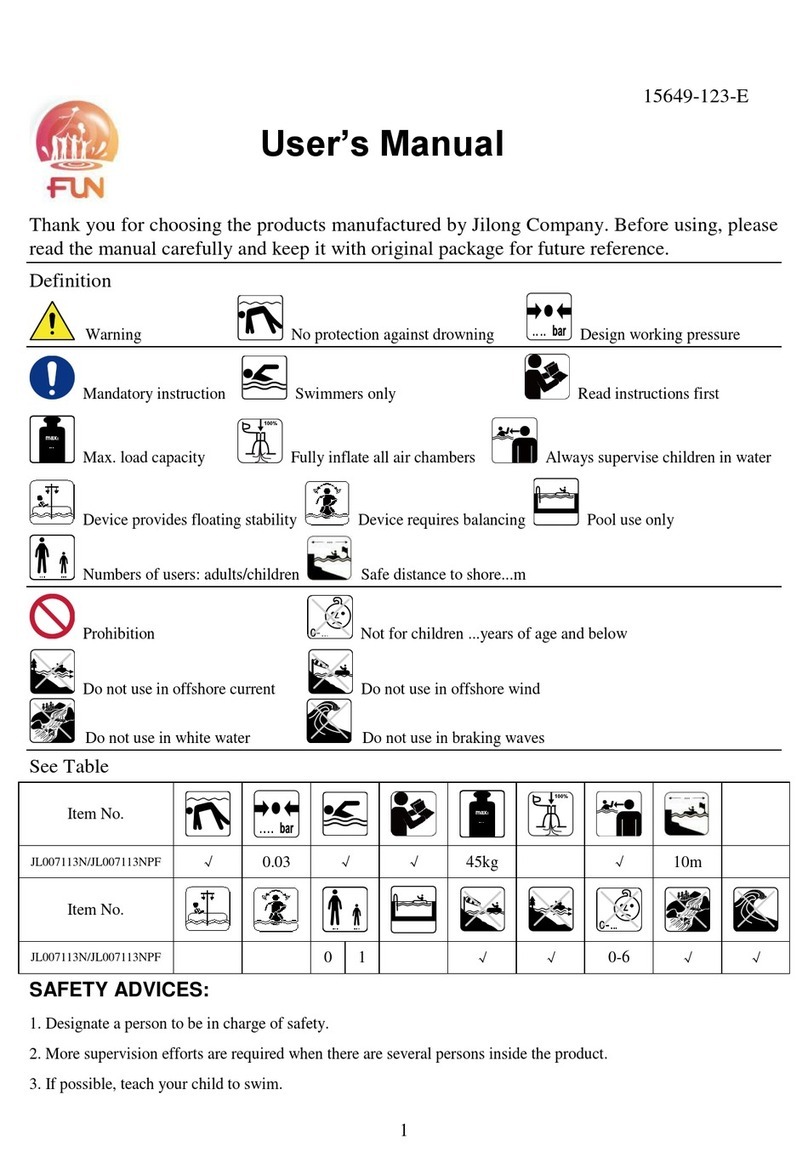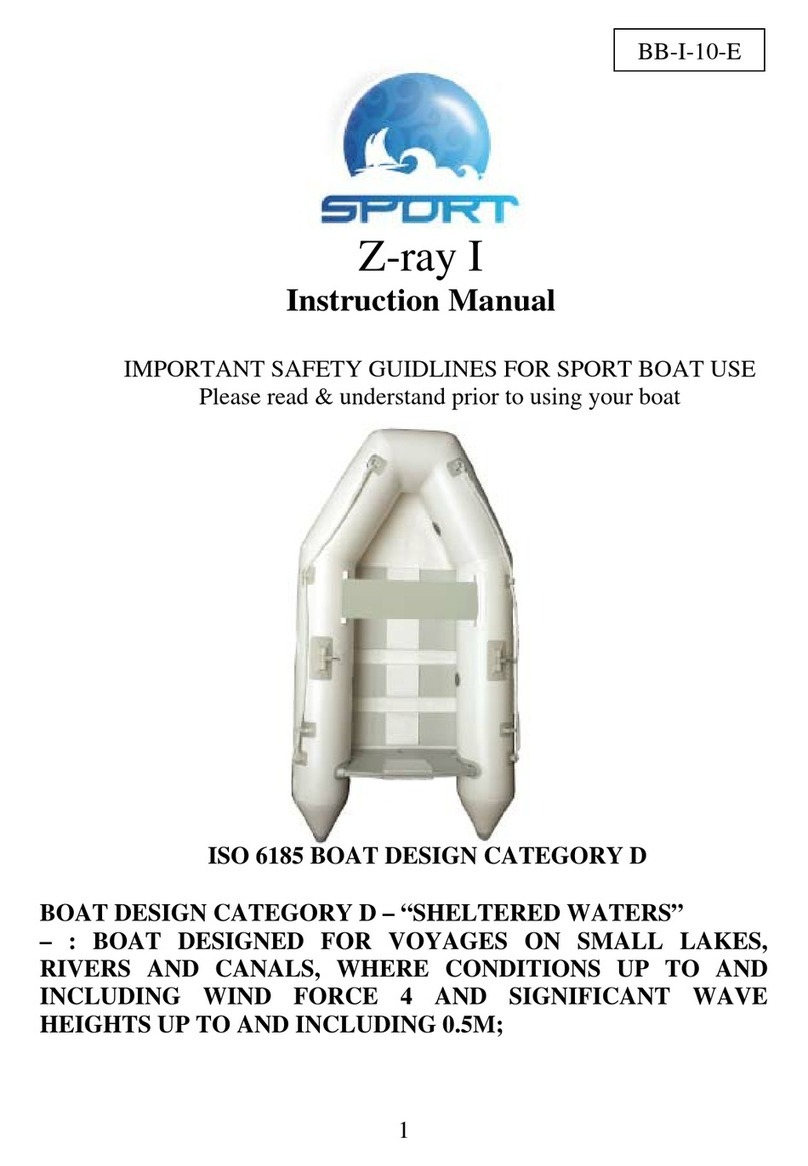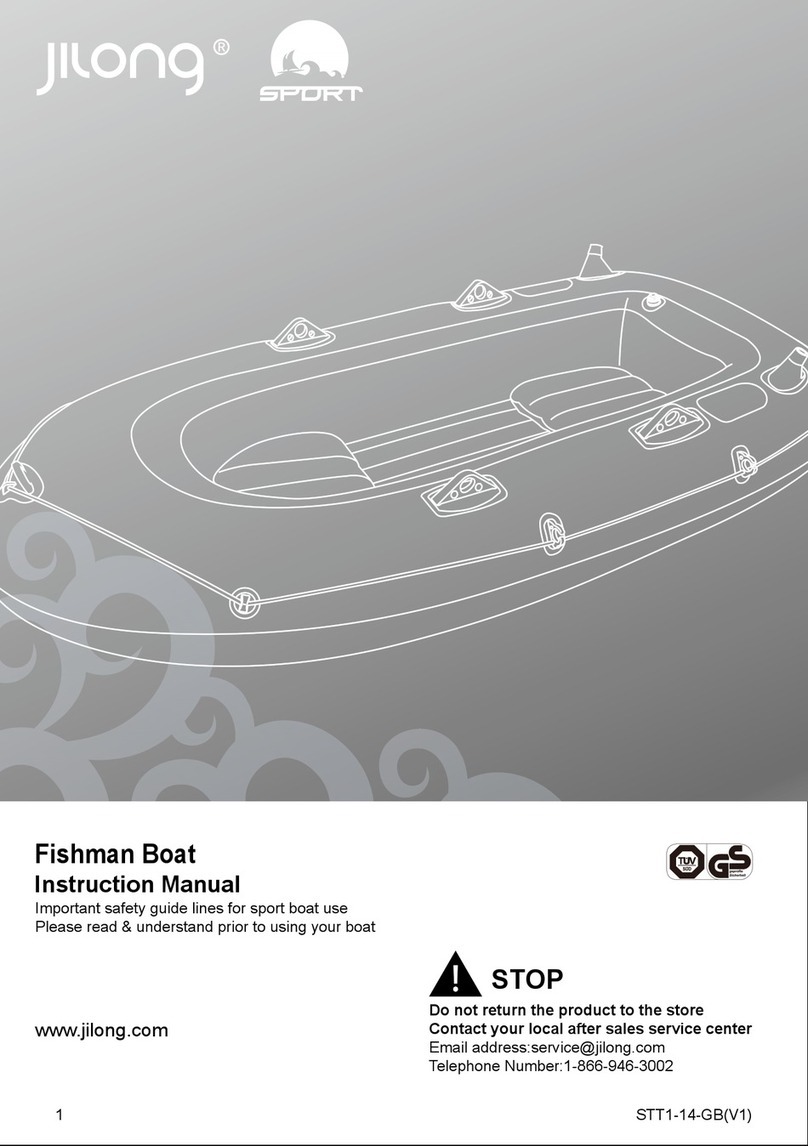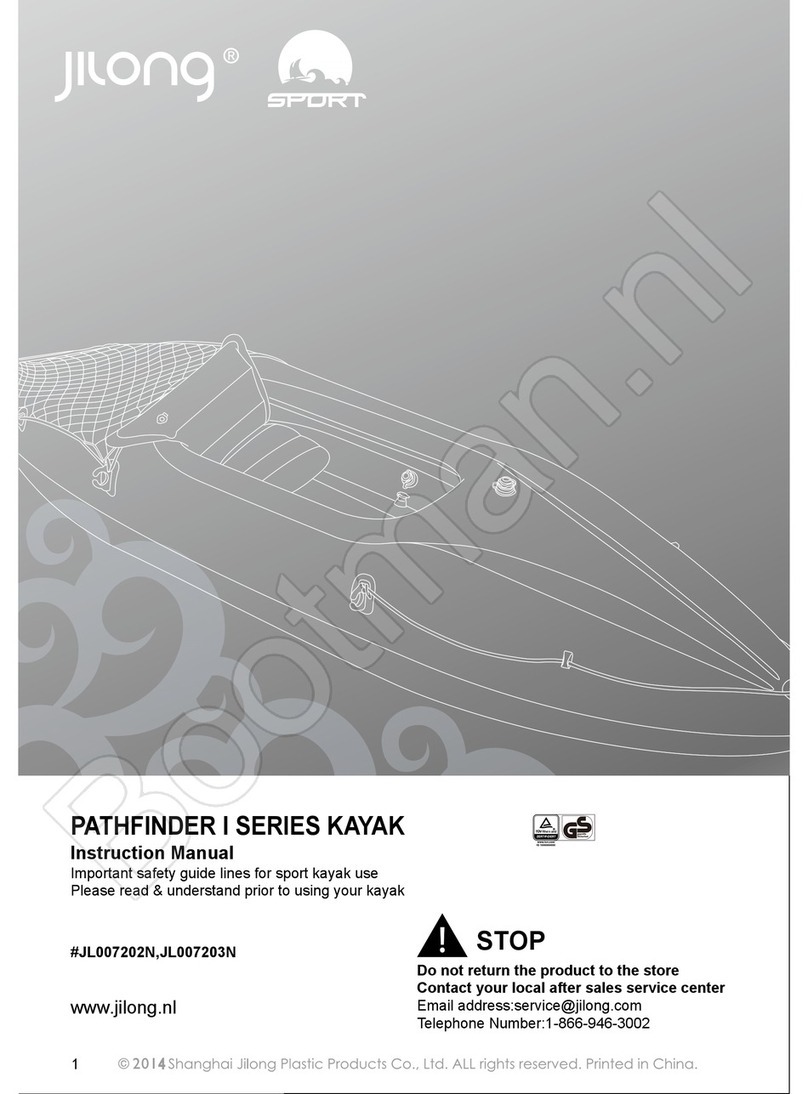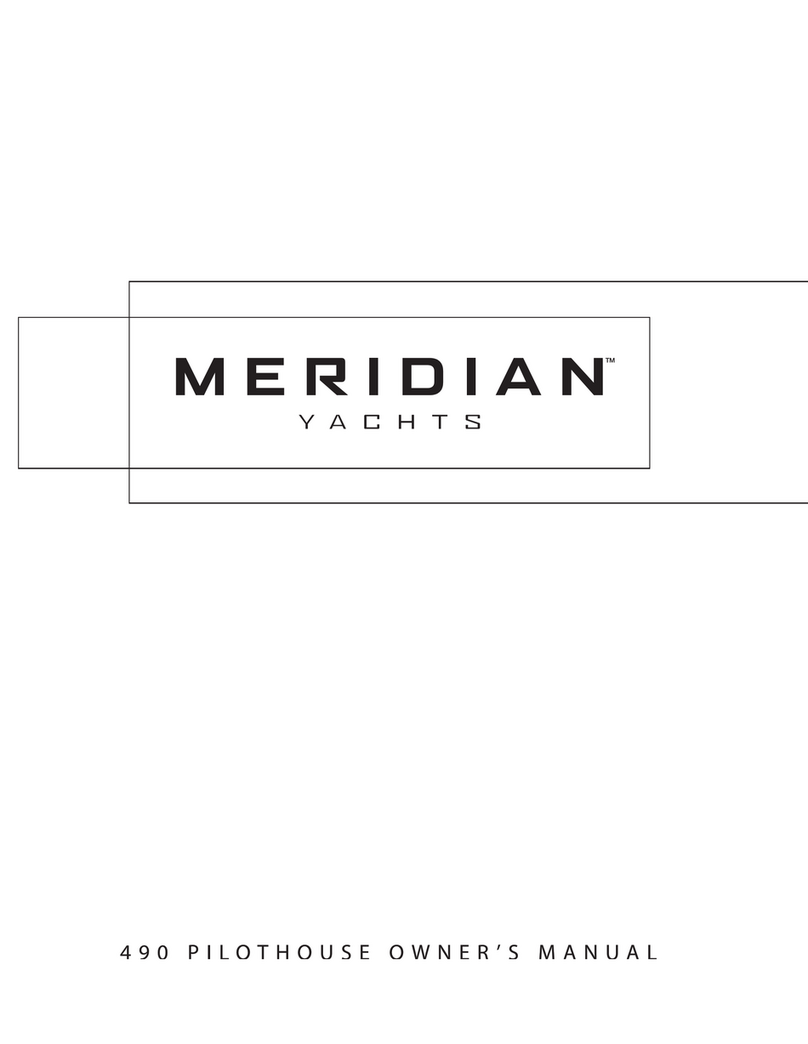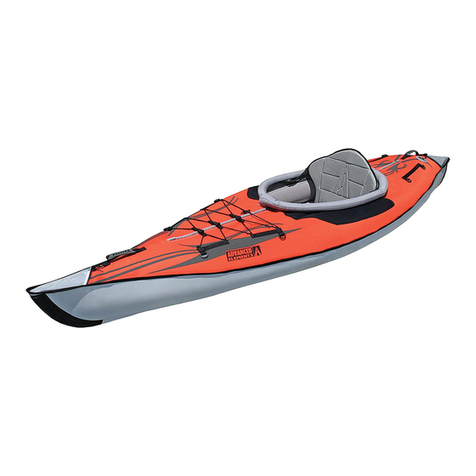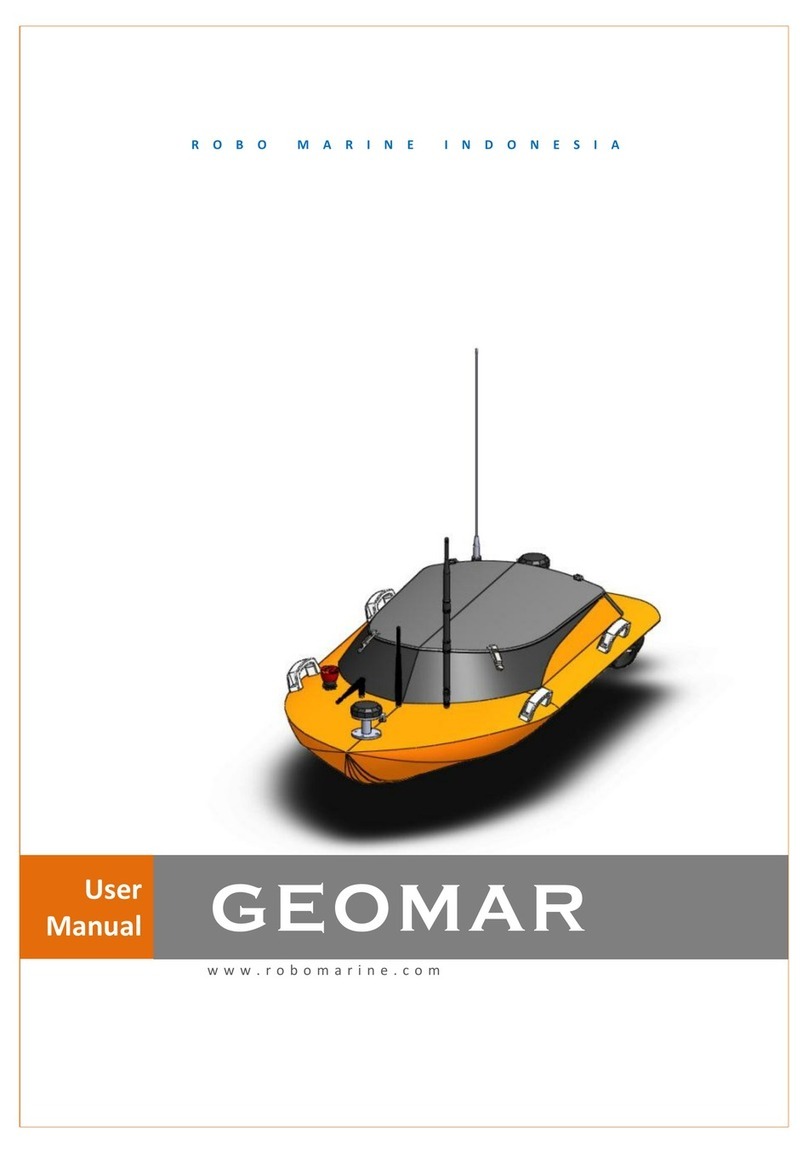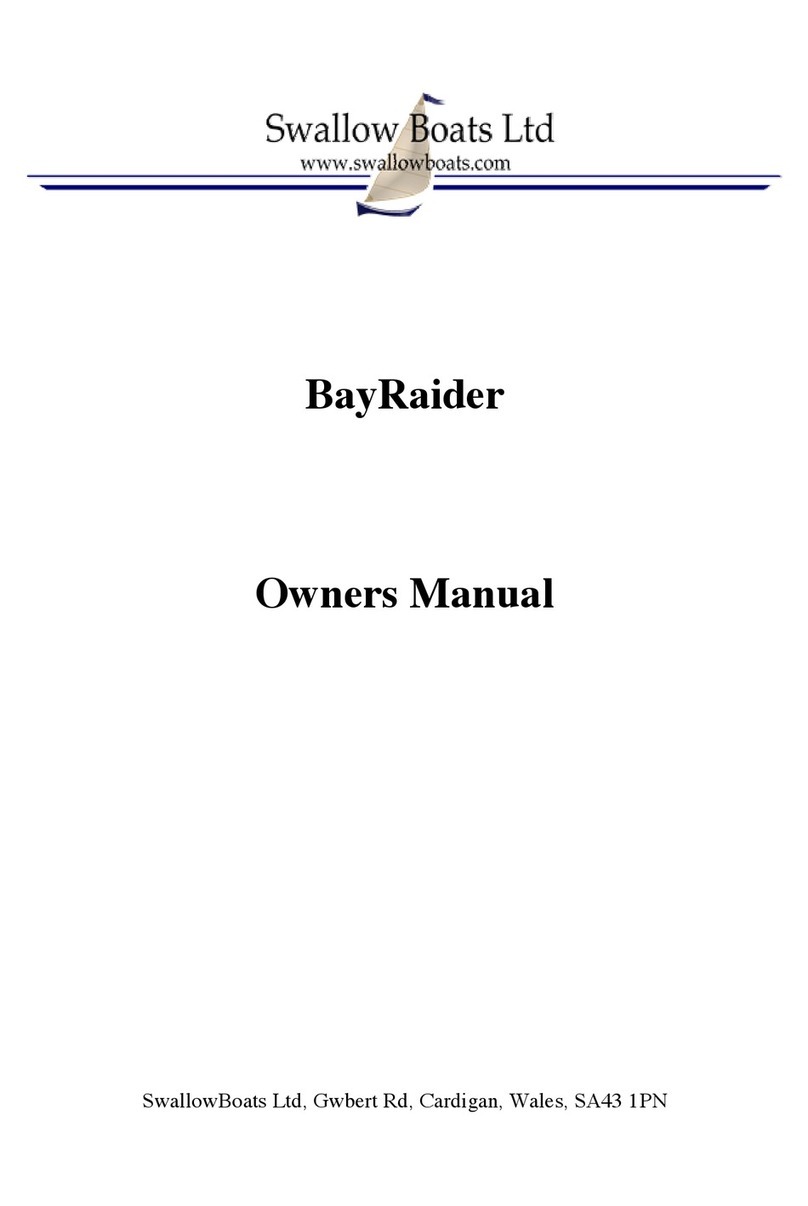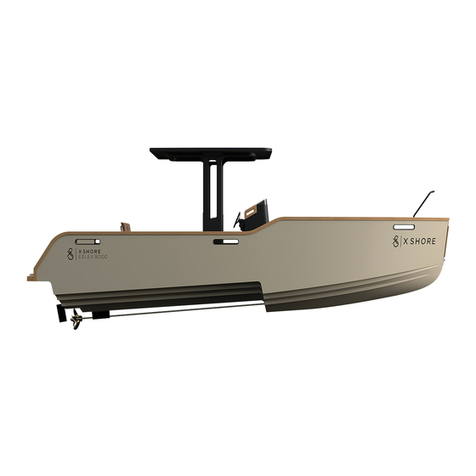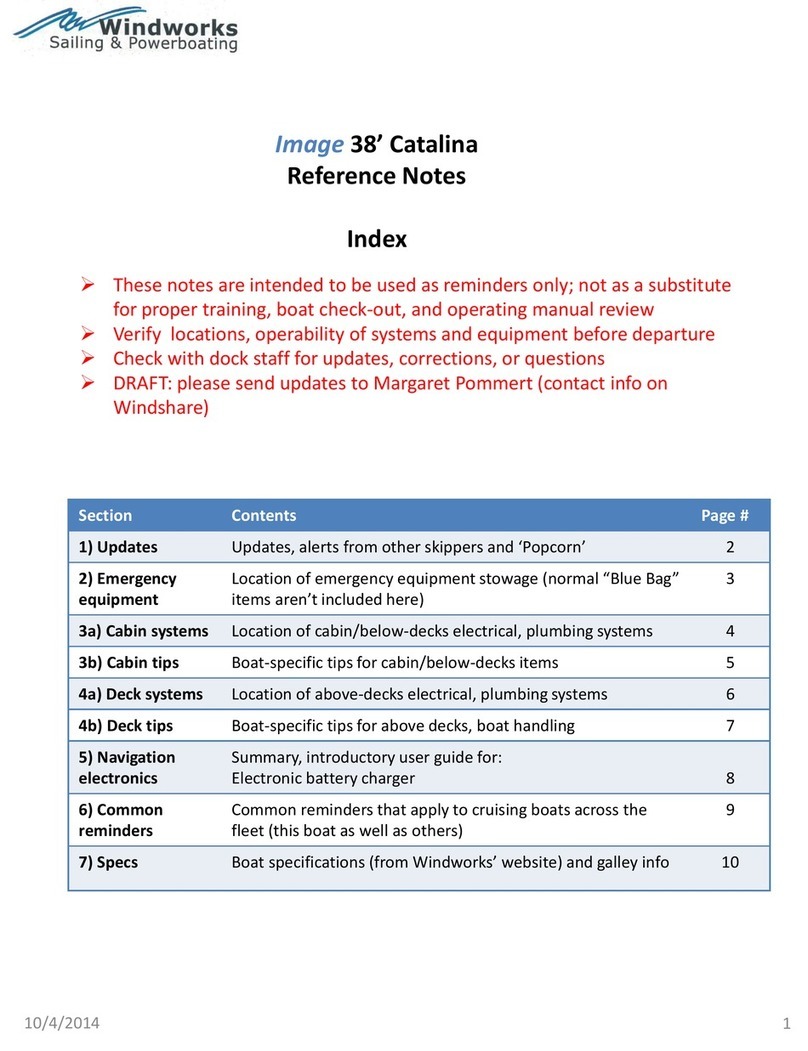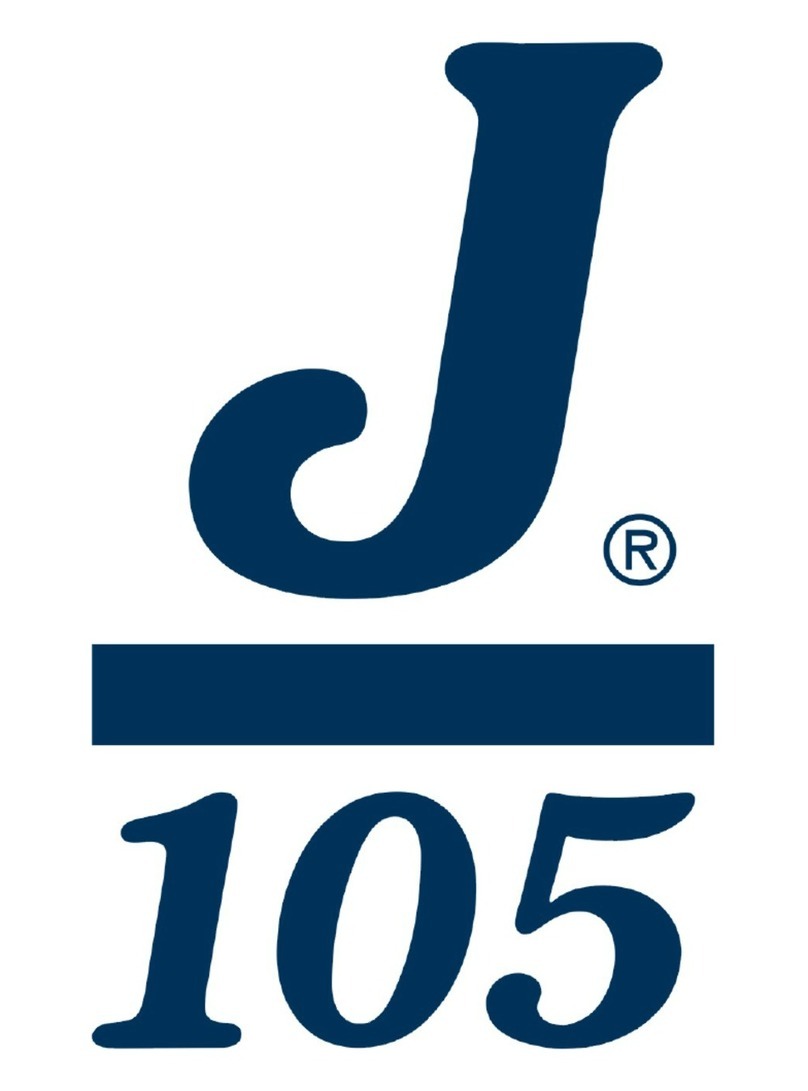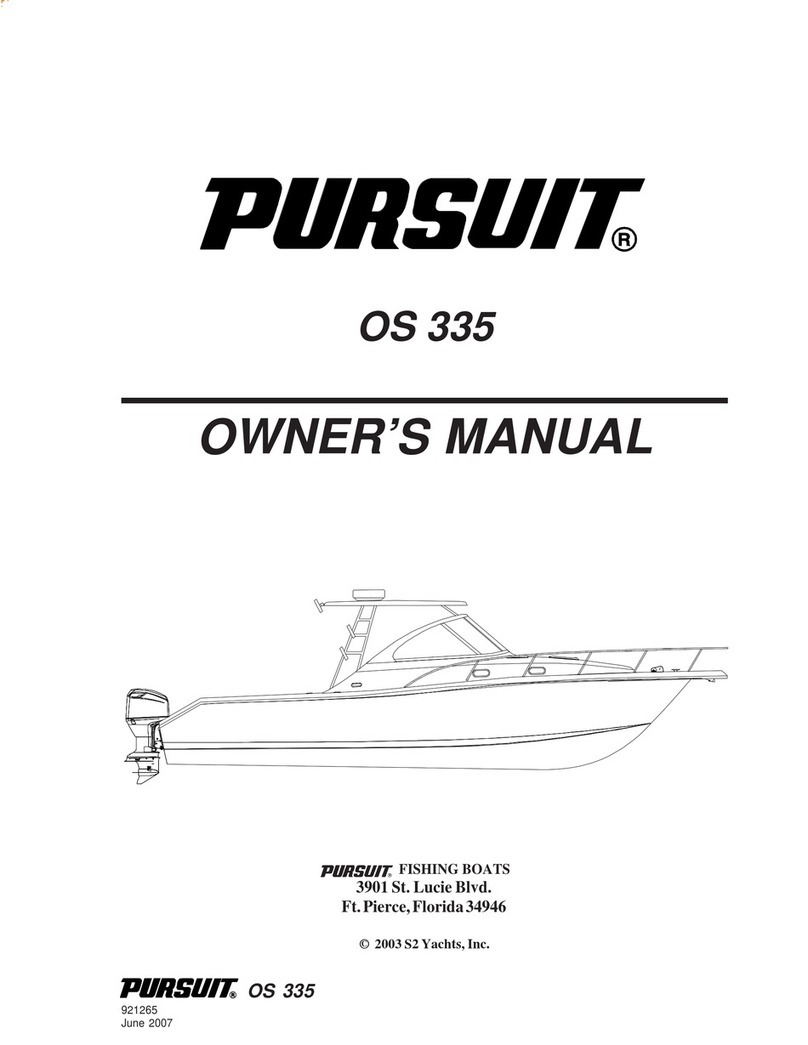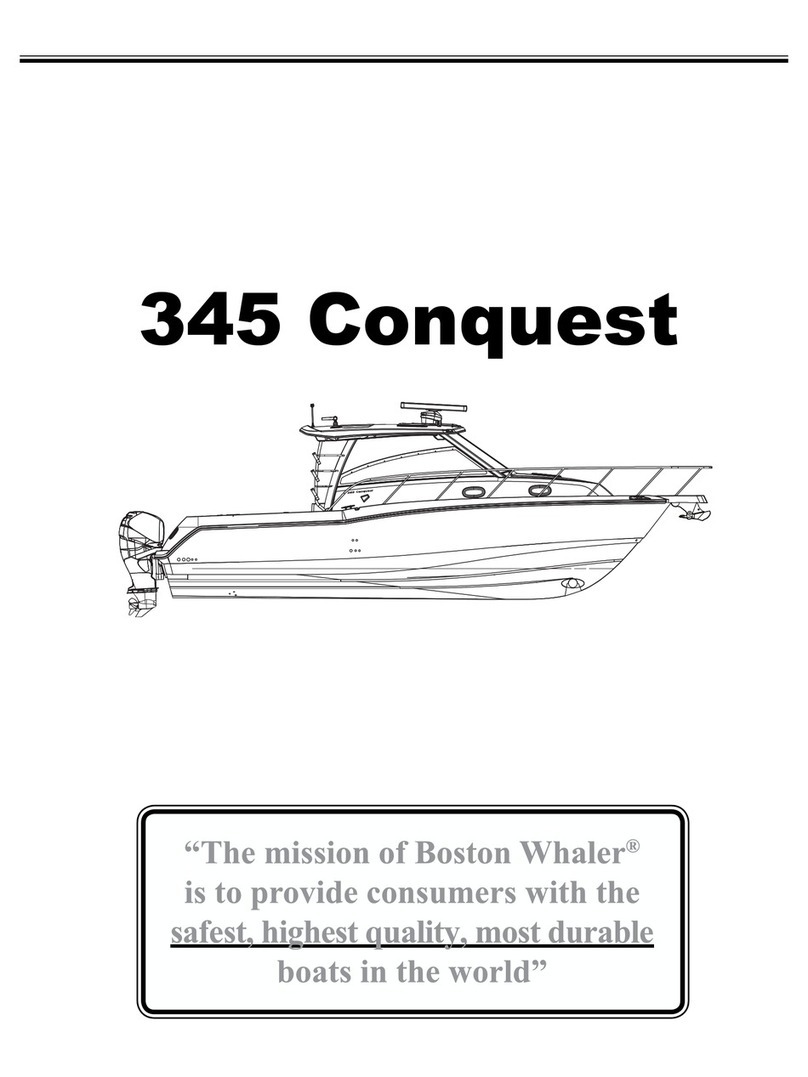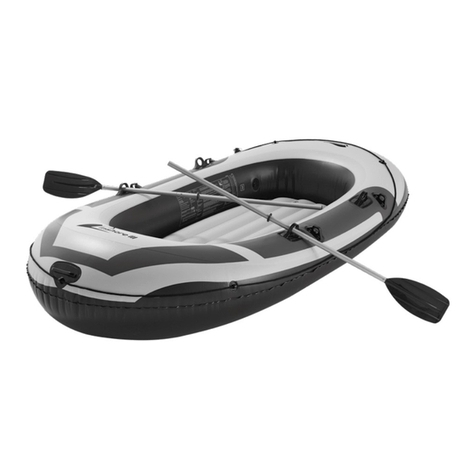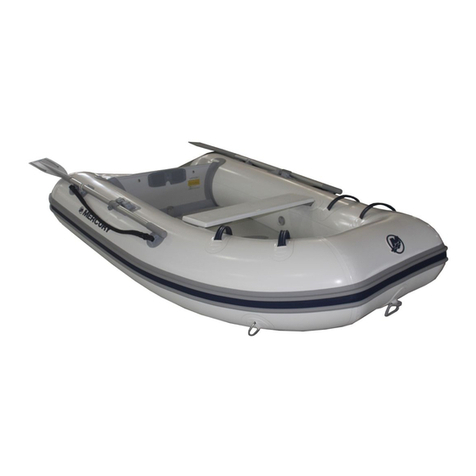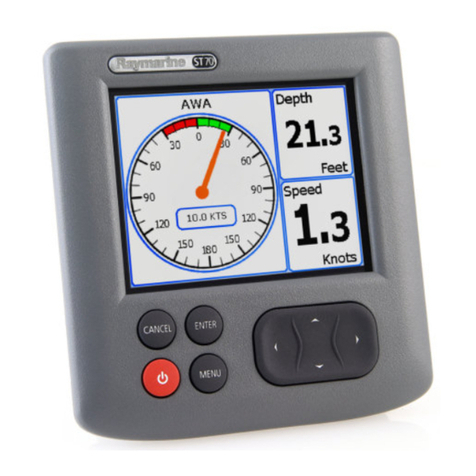ZBI-13-GB(V1)www.jilong.com www.jilong.com ZBI-13-GB(V1)6 7
IMPORTANT WARNING INFLATING AND DEFLATING THE BOAT
To enhance the enjoyment of your boat and protect the safety of passengers
and operator using the boat, always strictly observe the following safety warning:
-This is not a life saving device. Use only under competent supervision. Never
allow diving into this product. Never leave in or near the water when not in use.
Never tow from any vehicle. Adult assembly and operation required.
-Adults should inate the chambers in numbered sequence and use the printed
ruler on the hull of boat to check while inating. Excessive inating the boat can
cause the chambers to burst or cause damage to the welded seams.
Not following the operator’s instructions, which may detail important ination and
assembly sequences,can cause capsizing and drowning
-Taking the boating safety course and get hands-on training from your boat
dealer or local boating authorities. Review all safety requirements regularly.
Never navigate alone.
-A Personal Flotation Device (PFD) is required for each passenger. It is
especially important that children and non-swimmers wear a personal otation
device at all times. Children and non-swimmers need special instruction in the
use of PFD.
-Use caution when stepping or climbing aboard the boat. Step into the center of
the boat for maximum stability. Distribute the weight of passenger, gear, tackle
box and accessories evenly so that the boat sits even front to back and side to
side.Uneven distribution of persons or loads in the boat can cause capsizing and
drowning.
-Do not use your boat if you suspect a puncture or leak. It might be unsafe.
-WARNING: BEWARE OF OFFSHORE WINDS AND CURRENTS. These could
be unsafe conditions.
-Follow these rules to avoid drowning, paralysis or other serious injuries.
-WARNING: It is the responsibility of the boat operator to identify and obey all
local and state laws pertaining to boat safety and required safety equipment.
Please consult your local authorities to ensure compliance.
-Do not allow unattended children in the boat. Always make sure that at least
one responsible adult is supervising all children and those who don’t know how
to swim at all times.
-Always maintain the proper boat safety equipment in an easily accessible
place in your boat. Indicate clearly emergency phone numbers as well as safety
advisories and rules (such as “No jumping or Diving”)
-The total number of persons and total weight shall not exceed the information
printed on the boat. Do not exceed the maximum recommended capacities.
Exceeding the data given on the capacity plate can cause capsizing and
drowning.
-Boat is designed to be storable, seasonal boat. If you live in a temperate
area in which the boat will not be in use all year-round, it is STRONGLY
RECOMMENDED that you deate the boat and dry it thoroughly, and store it in
a protected area for the off-season. This will help extend your boat and prevent
a safety hazard from developing while the boat is not in use.
-WARNING: Certain household cleaning solvents, chemicals and other liquids
(such as battery acid, oil and gasoline) could damage the PVC fabric. In
the event of spill or mishandling, you should check for leaks and inspect for
structural integrity.
If the boat is inated during cold weather or without direct sunlight on the tubes,
care must be taken not to over-inate the tubes. As the air inside the tubes heats
up due to temperature rises or sunshine, the pressure will increase. The boat is
not tted with a safety valve, so the pressure must be monitored at all times.
-Select a clean area free of stones, gravel, sticks or other sharp objects.
-Carefully unfold the boat, spreading out the tubes and floor to make them as
smooth as possible. NOTE: For ease of install, it is preferable to set up the boat
on a warm and sunny day. If time permits, expose the unrolled boat to direct
sunlight for 1 hour or more, so that the boat material will be more exible during
installation.
CAUTION: DO NOT DRAG THE BOAT, AS IT MAY TEAR THE BOAT OR
CAUSE OTHER DAMAGE.
-Insert 4 boards into the sleeves located on the boat oor, and position the boards
into the middle of the sleeves
Inating


